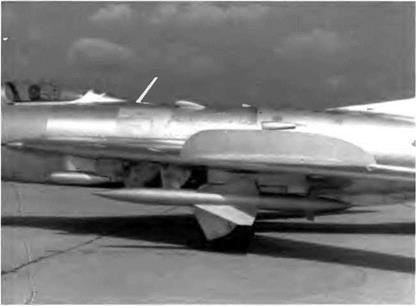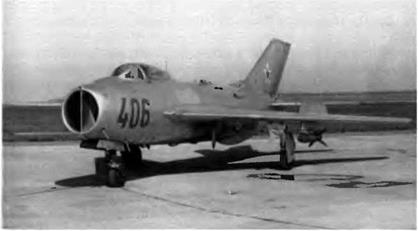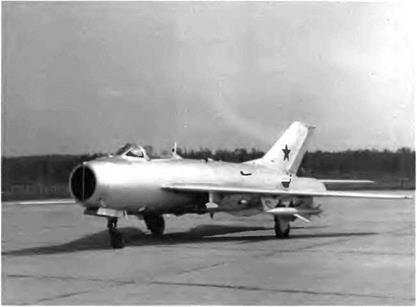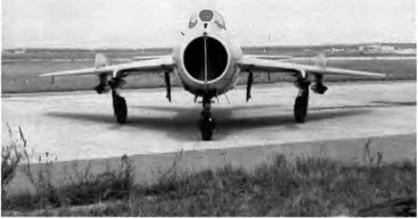MiG-19 / Flying Test Beds for Various Systems
Various experiments have been carried out on MiG-19s to upgrade some of their components and systems. That is how the KT-37 wheels of the main gear were replaced by KT-61s and the standard drum brakes were replaced by disc brakes, reducing markedly the heat generated by the brakes after landing. New gear legs were also tested for
|
|
The SM-9/3T was a MiG-19S without camions that was used for testing K-13 air-to-air missiles.
|
|
Close-up of the K-13 air-to-air missile Its launch rail was held by the MiG-19S’s all-purpose pylon.
|
|
|

|
|
|

|
MiG-19S no. 420 was also used for testing large-caliber rockets fired from triple launch tubes. |
KT-87 wheels. Other MiG-19s were used for firing tests of unguided rockets (by themselves or in pods) and homing missiles (infrared or radar-seeking). Below is a list of some modified prototypes and their missions.
SM-11: Tests of the Yastiyeb infrared sensor for night fighters in 1956.
MiG-19R: Tests of several new cameras for the MiG-19R daytime reconnaissance aircraft. A small number of this version were built
MiG-19P (SM-52F): (1) Tests of the Gorizont-1 navigational equipment, which transmitted coded radio signals giving speed, altitude, heading, and other information to ground stations in order to guide the aircraft to its target. (2) Tests of the Svod radio navigational aid, which in bad weather (zero visibility) could automatically calculate the aircraft’s coordinates (bearing and distance) in relation to the nearest ground station and vector the aircraft to a beacon. This same SM-52P was used to test the Almaz ("diamond") fire control radar linked to the Baza-6 range finder.
MiG-19S: Tests of the unique BK-65 astronomical compass repeater, which could calculate the aircraft’s true heading and keep it on a predetermined course in northern latitudes (from 40 to 90 degrees) and into conditions of sun visibility at altitudes above "aircraft horizon” up to 70 degrees. In 1956 the Ilirn experimental automatic direction finder was tested It was meant to guide the aircraft to radio stations or radio beacons. Several types of antennae were tested as well. In 1956 the RUP-4 instrument landing system was tested on a MiG-19. Its computer worked simultaneously with an automatic direction finder and an earth induction gyrocompass to plot the approach, using active guidance methods such as a "to/from” pointer. For the production MiG-19 a new NI-50IM dead reckoning position computer was tested and ordered. It could be operated at up to 20,000 m (65,600 feet) and 2,000 km/h (1,080 kt).
SM-21: MiG-19S no. 406, used for 210-mm S-21 unguided rocket tests, hence its designation.
MiG-19S (SM-2D, SM-6, SM-24): Tests of various navigational systems and weaponry















